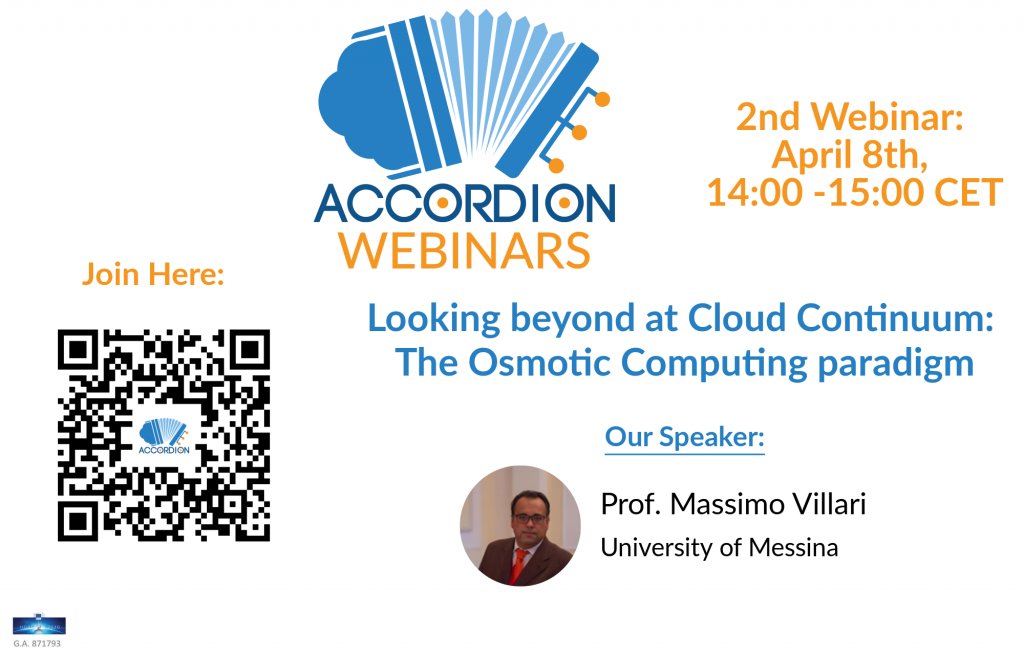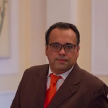
Abstract
With the promise of potentially unlimited power and scalability, cloud computing (especially infrastructure as a service [IaaS]) supports the deployment of reliable services across several application domains. In the Internet of Things (IoT), cloud solutions can improve the quality of service (QoS), fostering new business opportunities in multiple domains, such as healthcare, finance, traffic management, and disaster management.
Recent technological advances have disrupted the current centralized cloud computing model, moving cloud resources close to users: The Cloud Continuum is providing these capabilities. Moreover, microservice approach allows to instantiate the new paradigm of Continuum that’s driven by the significant increase in resource capacity/capability at the network fog/edge, along with support for data transfer protocols that enable such resources to interact more seamlessly with datacenter-based services. One of the near future challenges is represented by the management of even more high distributed systems along with the need to federated those environments. The automatic deployment of microservices is becoming a must, importantly they have to be composed and interconnected over IoT, Fog, edge and cloud infrastructures, thinking to Security. Various stakeholders (Cloud providers, Edge providers, Fog provider, Security provider, Application providers, IoT DevOPs, and so on) can contribute to the provisioning of new IoT services and applications in Federated Environments. Osmotic Computing can be seen as a possible answer to smoothly manage the challenging services against the Cloud Continuum of the future. Here new models and program paradigm are discussed, inspired by Nature.
Short bio
 Prof. Massimo Villari is Full Professor in Computer Science at University of Messina (Italy). He is actively working as IT Security and Distributed Systems Analyst in Cloud Computing, virtualization and Storage and one of the creators of Osmotic Computing Paradigm. For the EU Projects “RESERVOIR” he leaded the IT security activities of the whole project. For the EU Project “VISION-CLOUD”and H2020-BEACON, he covered the role of architectural designer for UniME. He was Scientific ICT Responsible in the EU Project frontierCities, the Accelerator of FIWARE on Smart Cities – Smart Mobility. He is strongly involved in EU Future Internet initiatives, specifically Cloud Computing and Security in Distributed Systems. He is co-author of more of 190 scientific publications and patents in Cloud Computing (Cloud Federation), Distributed Systems, Wireless Network, Network Security, Cloud Security and Cloud and IoTs, and recently in Osmotic Computing. He was General Chair of ESOCC 2015 and IEEE-ISCC 2016. Since 2011 he is a Fellow of IARIA, recognized as a Cloud Computing Expert, and since 2011 he is also involved in the activities of the FIArch, the EU Working Group on Future Internet Architecture. In 2014 was recognized by an independent assessment (IEEE Cloud Computing Transaction, Issue April 2014) as one of World-Wide active scientific researchers, top 27 classification, in Cloud Computing Area. He is General Chair of IEEE-ICFEC 2019 and Workshop Co-Chair in IEEE-CIC 2018. He will be General Chair of IEEE CCGRID in 2022 in Messina(Sicily). Currently he is the Head of Computer Science School and Rector delegate on ICT for whole University of Messina. He also covers the role of academic consultant for the City Council of Messina in the context of Smart City.
Prof. Massimo Villari is Full Professor in Computer Science at University of Messina (Italy). He is actively working as IT Security and Distributed Systems Analyst in Cloud Computing, virtualization and Storage and one of the creators of Osmotic Computing Paradigm. For the EU Projects “RESERVOIR” he leaded the IT security activities of the whole project. For the EU Project “VISION-CLOUD”and H2020-BEACON, he covered the role of architectural designer for UniME. He was Scientific ICT Responsible in the EU Project frontierCities, the Accelerator of FIWARE on Smart Cities – Smart Mobility. He is strongly involved in EU Future Internet initiatives, specifically Cloud Computing and Security in Distributed Systems. He is co-author of more of 190 scientific publications and patents in Cloud Computing (Cloud Federation), Distributed Systems, Wireless Network, Network Security, Cloud Security and Cloud and IoTs, and recently in Osmotic Computing. He was General Chair of ESOCC 2015 and IEEE-ISCC 2016. Since 2011 he is a Fellow of IARIA, recognized as a Cloud Computing Expert, and since 2011 he is also involved in the activities of the FIArch, the EU Working Group on Future Internet Architecture. In 2014 was recognized by an independent assessment (IEEE Cloud Computing Transaction, Issue April 2014) as one of World-Wide active scientific researchers, top 27 classification, in Cloud Computing Area. He is General Chair of IEEE-ICFEC 2019 and Workshop Co-Chair in IEEE-CIC 2018. He will be General Chair of IEEE CCGRID in 2022 in Messina(Sicily). Currently he is the Head of Computer Science School and Rector delegate on ICT for whole University of Messina. He also covers the role of academic consultant for the City Council of Messina in the context of Smart City.
